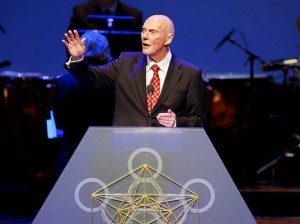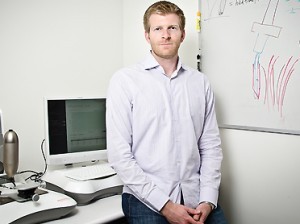
Stephen Nellis | Friday, November 29th, 2013
Technology,
Top Stories,
Tri-County Economy Born in Norway, Kavli made his way to the United States after World War II to pursue physics and expand on his lifelong entrepreneurial streak. In the late 1950s, he founded Kavlico Corp., a Moorpark-based maker of advanced sensors for cars and aircraft. He also invested in real estate for more than 50 years.

Stephen Nellis | Friday, November 29th, 2013
Central Coast,
Small Business,
Tri-County Economy,
Wine & Viticulture The Bottlemeister’s schedule is so busy that CEO Tom Nulman can only take on a few new clients a year. But he tries to make room for small operations, giving them the same pricing as larger clients, even if the lower volumes means he’ll only break even on a day of bottling.
Stephen Nellis | Friday, November 29th, 2013
Central Coast,
Technology,
Top Stories,
Tri-County Economy Cal Poly San Luis Obispo is rolling out a new Cybersecurity Center in collaboration with Northup Grumman and Raytheon with an eye toward training security experts for the defense industry and giving all of its engineering students a firmer grasp of how to make their creations secure against hackers.

Stephen Nellis | Monday, November 25th, 2013
Central Coast,
Technology,
Top Stories An in-bottle wine aerator, a Spider-Man-like robot that can climb walls and a peach pit detector were among the projects on display at Cal Poly San Luis Obispo’s mechanical engineering expo on Nov. 21.

Stephen Nellis | Friday, November 22nd, 2013
Banking & Finance,
Top Stories,
Tri-County Public Companies CKE will join Roark affiliated companies, which include Arby’s, Cinnabon, Carvel, Wingstop, Corner Bakery and a number of others. “The cultural match is very positive, and we look forward to taking full advantage of their experience and expertise in the restaurant segment,” CKE chief executive Andy Puzder told the Business Times.
Stephen Nellis | Friday, November 22nd, 2013
Central Coast,
Real Estate,
Top Stories,
Tri-County Economy Santa Barbara County’s decision to impose a strict cap on carbon emissions from a proposed oil project puts the county at a competitive disadvantage in California and likely will cut into the money energy firms pump into the regional economy.
The Board of Supervisors voted 3-2 on Nov. 12 to require Santa Maria Energy to cap its carbon emissions at 10,000 tons per year. Santa Maria Energy had proposed 136 wells for a site near Orcutt.
Santa Barbara County’s oil is thick and viscous. In order to extract it, companies inject steam into wells to soften the oil. Burning natural gas to create the steam is what generates the bulk of carbon emissions.















